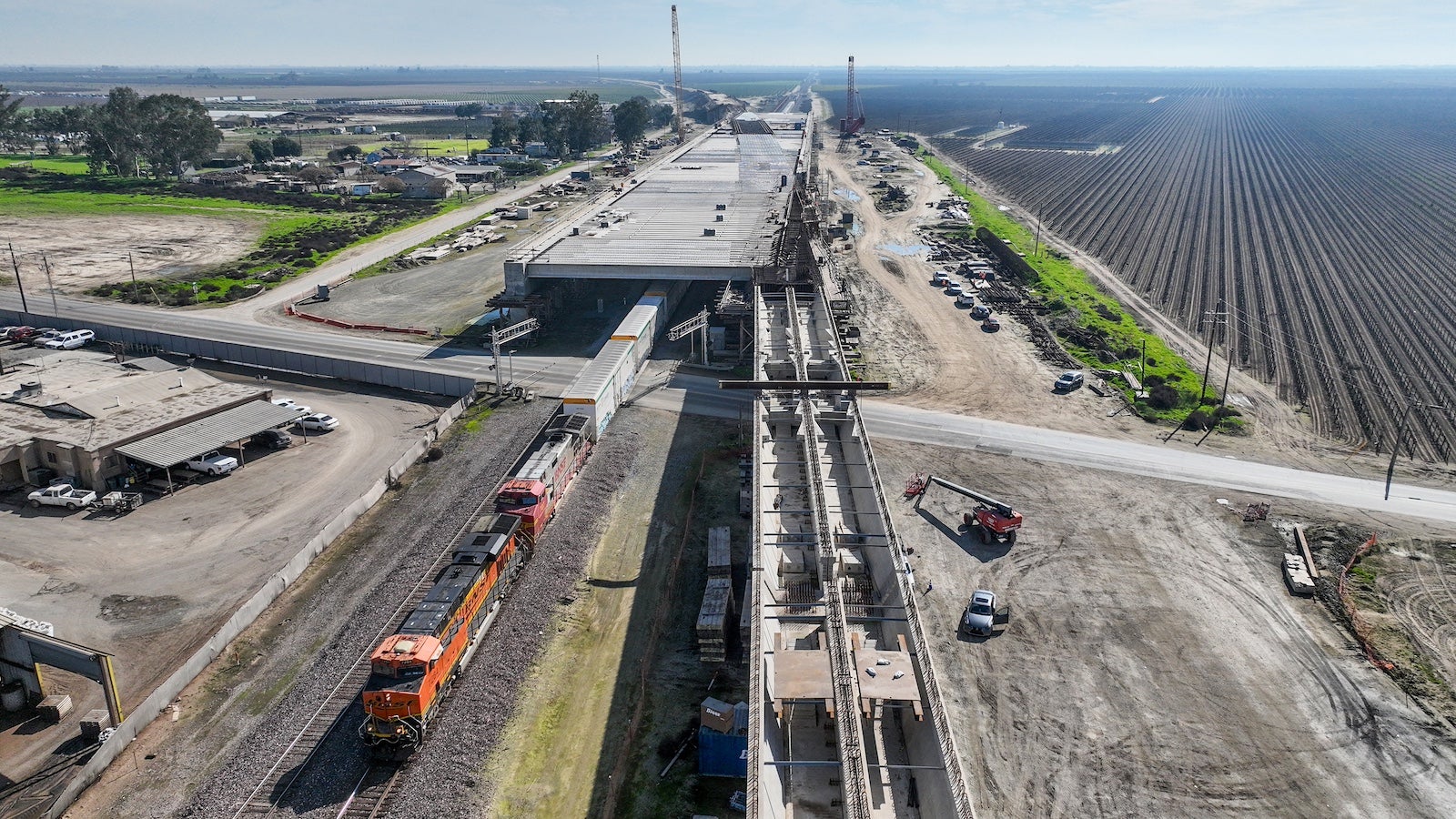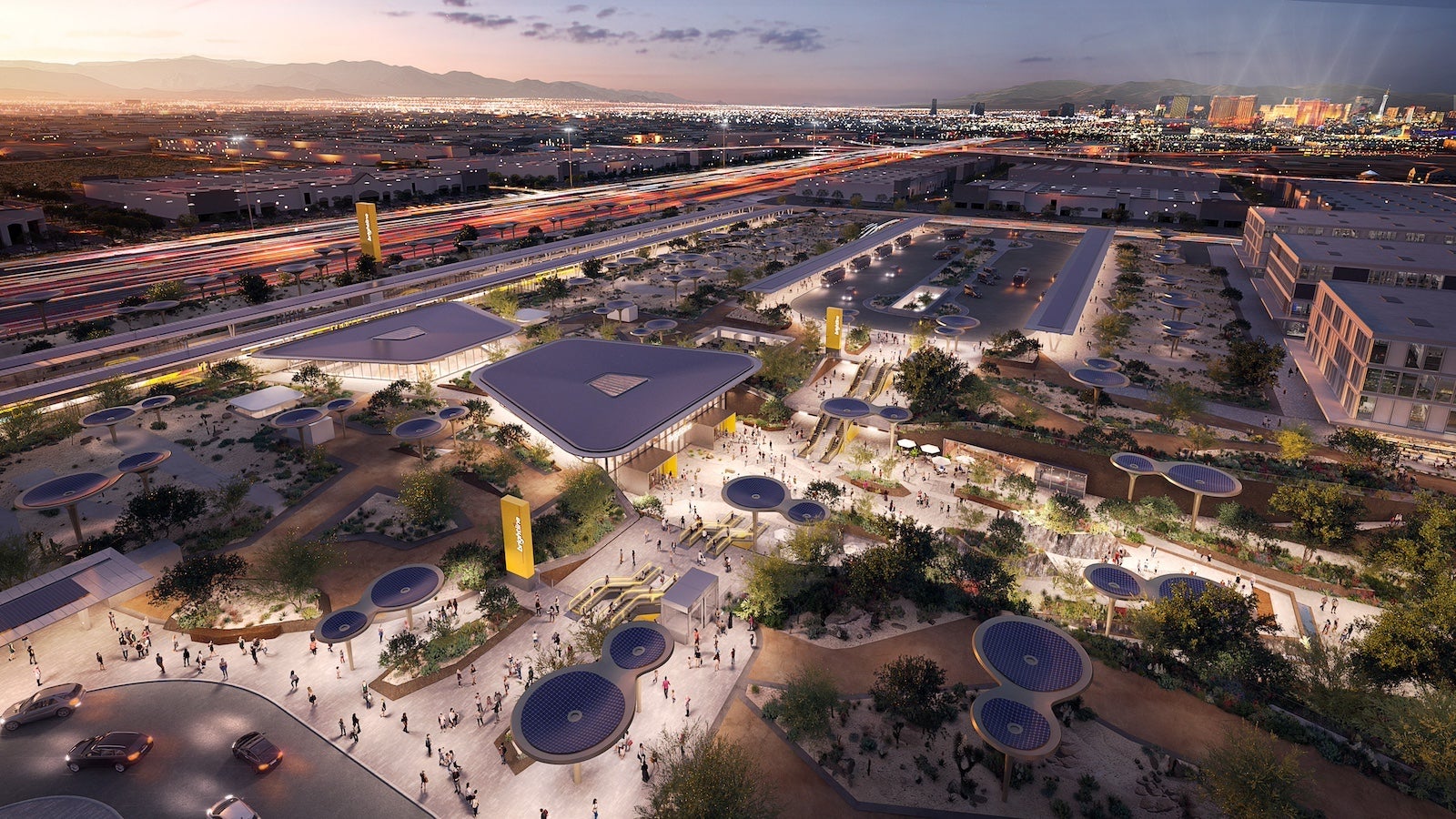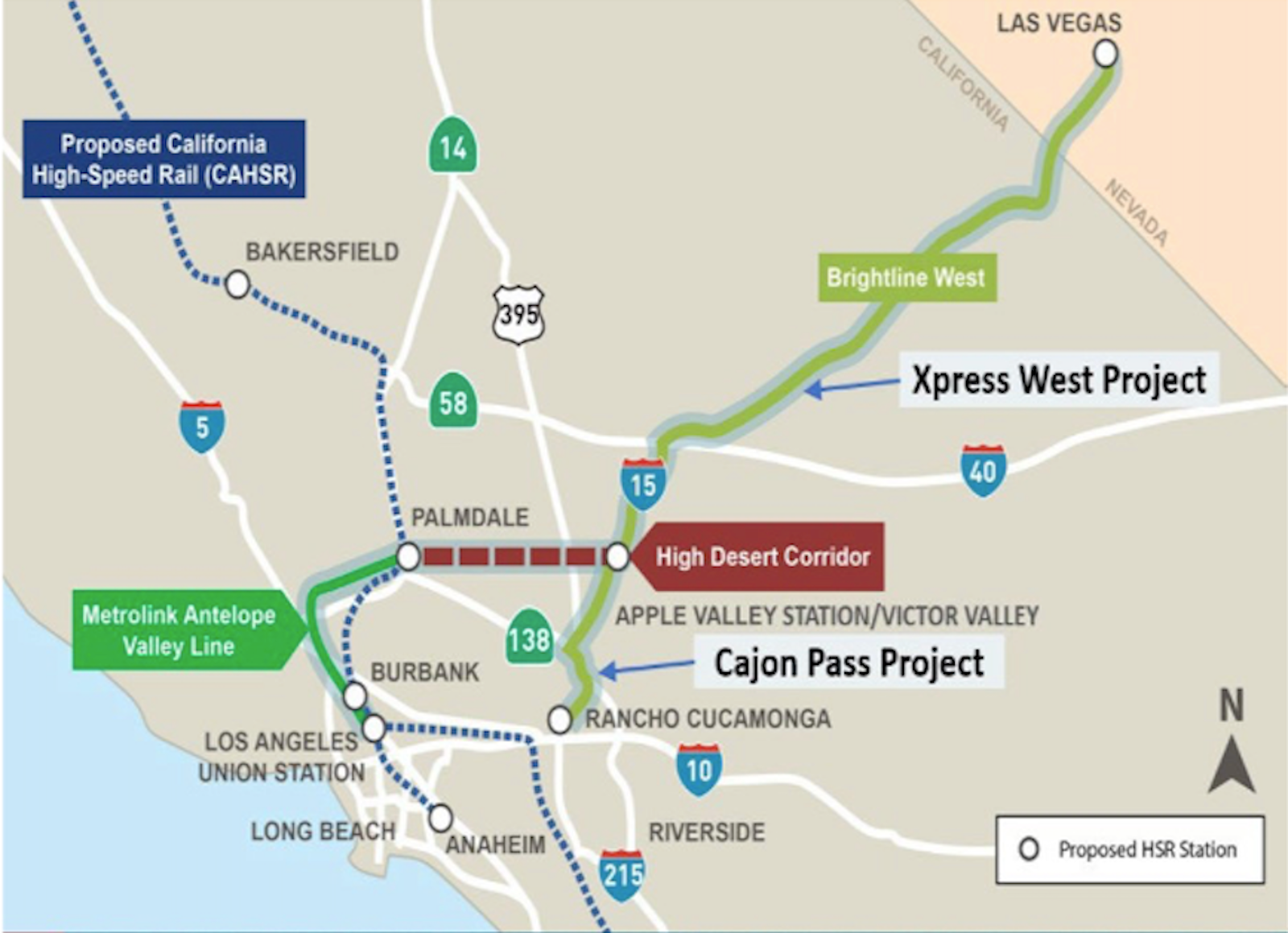A plan to link two major high-speed rail lines currently under construction in California is moving forward, thanks to a recent significant development.
The High Desert Corridor Joint Powers Agency, a consortium of local governments and organizations, recently signed two landmark labor agreements that could pave the way for a 54-mile connection between two massive rail projects that are in the works: Brightline West and California High-Speed Rail (sometimes referred to as the “bullet train”).
With this development, leaders envision that passengers could eventually take a “one-seat” ride from Las Vegas to downtown Los Angeles.
But a lot has to happen before that’s a reality.
2 systems under construction
California is a hotbed of new high-speed rail projects.
Despite years of costly delays, the long-planned California High-Speed Rail could be a major transportation option in the state — once open, of course — and will connect the Bay Area with Los Angeles in less than three hours. A subsequent construction phase will see extensions stretching as far as Sacramento and San Diego.
Meanwhile, Brightline, the private company behind the innovative rail system in Florida, broke ground this spring on a new 218-mile high-speed line set to connect Southern California with Las Vegas by the 2028 Olympic Games, which will take place in Los Angeles.
Amid those two projects, a group of Southern California leaders is focused on creating a seamless link between the two electric rail lines.
High Desert Corridor
The proposed High Desert Corridor would span 54 miles and has been discussed for years. Plans call for a line to be laid from Victor Valley at the eastern end — a Mojave Desert town in the Inland Empire where Brightline West plans to build a station — to Palmdale at the west end, where the bullet train is set to run.

Daily Newsletter
Reward your inbox with the TPG Daily newsletter
Join over 700,000 readers for breaking news, in-depth guides and exclusive deals from TPG’s experts
Read more: The best credit cards for Amtrak and train travel
The proposals require tracks to be compatible with both systems’ trains, giving a would-be operator — or operators — the ability to carry passengers at speeds topping 200 miles per hour, a spokesperson for the organization told TPG.
The group hopes the project could eventually set the stage for nonstop rail service between Vegas and Los Angeles Union Station. However, Brightline West plans require riders to connect to regional transportation to reach the city center.
The High Desert Corridor won California state environmental clearance in June 2016, and its leaders are now seeking similar federal approvals.
They’re also on the hunt for more funding. So far, leaders have $2 billion earmarked for the project and told TPG they’re open to any number of funding options — federal grants, loans or a partnership with a private company.
The latest estimates peg the total project price tag at somewhere between $5 billion and $6 billion — though that could shift as plans continue to develop and evolve.
The group hopes to break ground by 2028, right around the time Brightline West is due to be completed.
Last week, the project took a major step forward when more than a dozen unions signed a memorandum of understanding. The move paves the way for labor agreements for the construction as well as for maintenance and operations once the line is completed.
Bottom line
California has two major high-speed rail projects in the works. Now, there are signs of progress on a plan to connect the two train systems, perhaps creating a far more connected transportation landscape on the West Coast in the not-too-distant future.
All of this comes amid massive U.S. federal and private investment in rail. Between new intercity lines and transformative improvements along Amtrak’s Northeast Corridor, it’s an interesting time of development for the future of train travel in the U.S.
Related reading:



